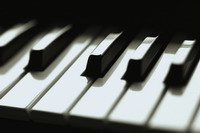Piano Sheets > Barry Gibb Sheet Music > If I Can't Have You (ver. 1) Piano Sheet
If I Can't Have You (ver. 1) by Barry Gibb - Piano Sheets and Free Sheet Music

About the Song
"If I Can't Have You" is a disco song written by Barry, Robin and Maurice Gibb of the Bee Gees.
"If I Can't Have You" was intended to be included in the follow-up album to Children of the World (1976), but was given to Yvonne Elliman when the Bee Gees became involved in the production of the movie Saturday Night Fever (1977) whose soundtrack featured the song. The original intent was that the Bee Gees contribute "How Deep is Your Love" for Elliman to sing in Saturday Night Fever but ultimately the Bee Gees recorded that song themselves while Elliman recorded "If I Can't Have You". Elliman's version became an international smash hit, and reached number one on the Billboard Hot 100, and #4 in the UK. The Bee Gees' version was released as the B-side to the single "Stayin' Alive" in 1978 and also appeared in the 2001 compilation Bee Gees Their Greatest Hits: The Record.
A remixed version of The Bee.
Download this sheet!
About the Artist

Random article
Piano notes and music reading No language is easy to learn except for our mother tongue. Mother tongue is a language which we start learning as soon as we are conceived. But learning some other language can be difficult if you are really not into it. Piano Notes are written in a completely different language. Agreed that the characters in the piano notes are very artistic and beautiful but they are equally strange to beginners and newcomers. But here is one interesting fact. Learning music reading from a piano notes music sheet is not a very difficult task. Actually it is much easier than learning a foreign Asian language like Chinese. Memorization and repetition are the two main ingredients for success in mastering the language of piano notes. So realistically speaking, once you are done reading the basics, all you have to do is practice the language as much as you can. To say in a very classical tone, practice till each and every note starts running through your veins. (More...)
